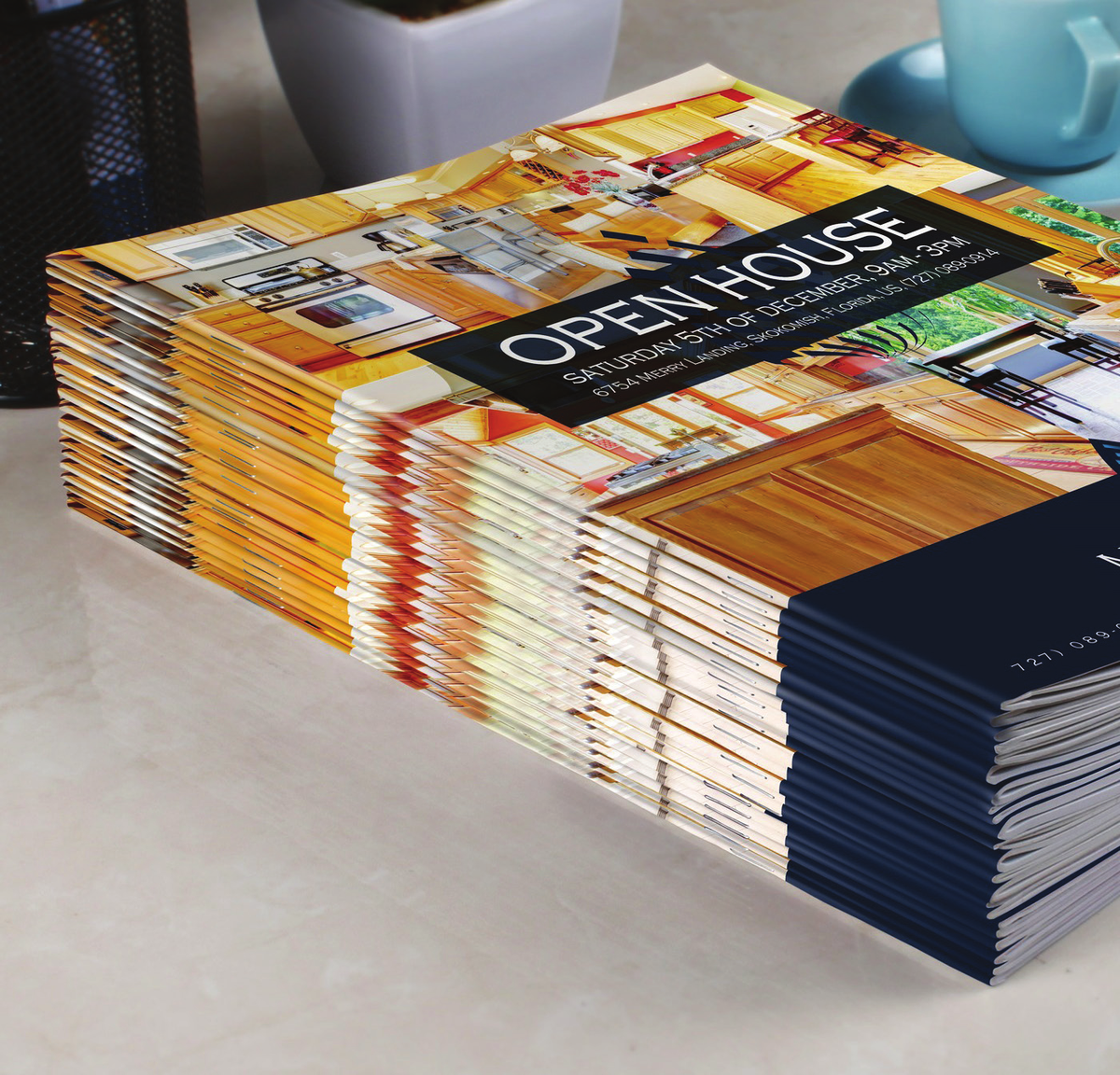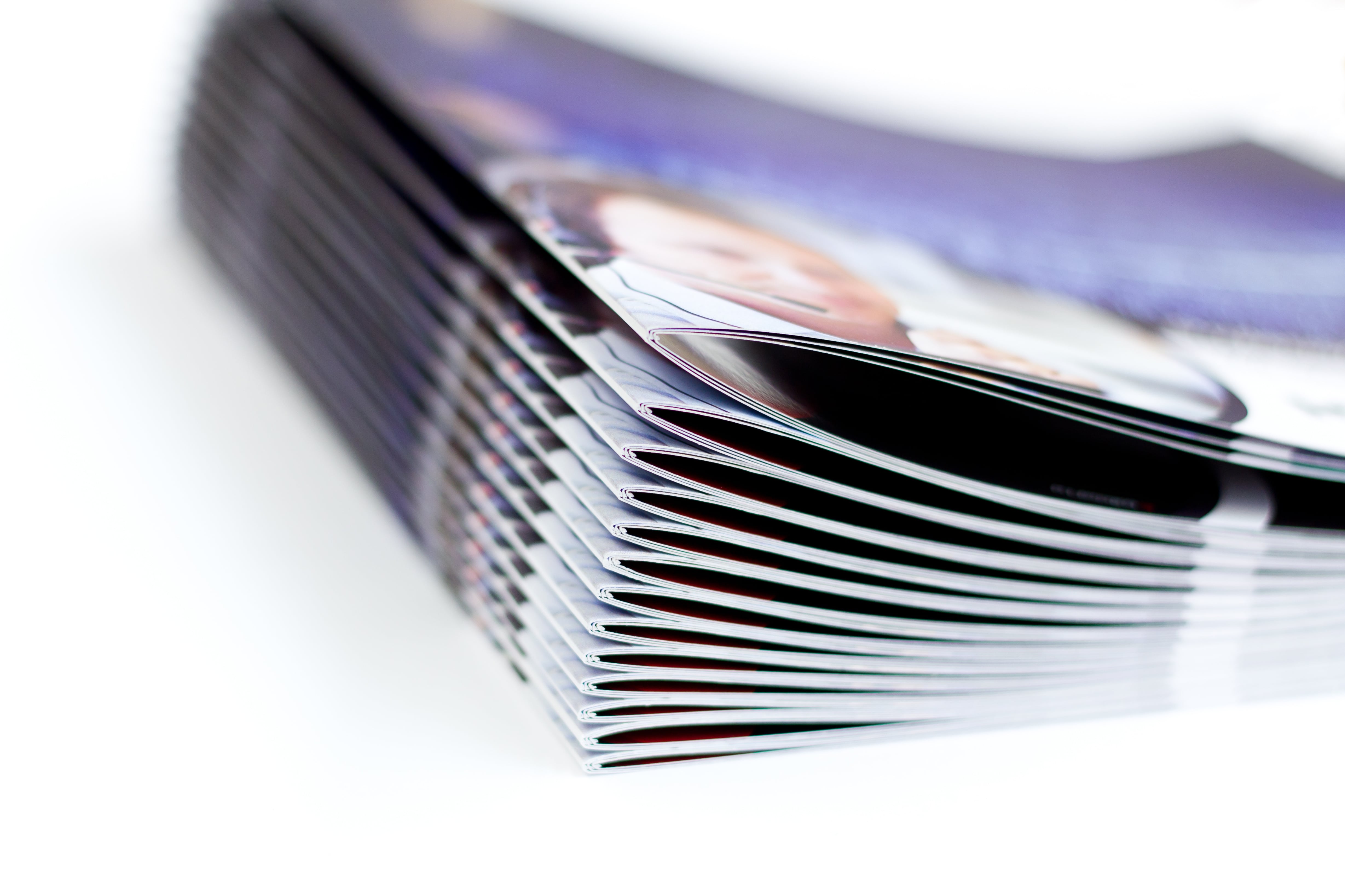Why Businesses in Miami Are Investing in Premium Booklet Printing
Why Businesses in Miami Are Investing in Premium Booklet Printing
Blog Article
The Necessary Overview to Recognizing Booklet Printing Options and Techniques
The process of booklet printing includes numerous considerations that can considerably affect the end product. From picking the appropriate style and size to recognizing the subtleties of binding methods, each selection plays a vital role. Furthermore, factors such as paper stock and printing methods further affect the performance of the booklet. As one browses these options, it becomes imperative to grasp just how they adjoin and what that means for the overall end result.
Comprehending Pamphlet Formats and Dimensions
When thinking about brochure printing, understanding the different formats and dimensions available is important for achieving the wanted discussion. Brochures can be produced in various styles, including saddle-stitched, spiral-bound, and perfect-bound, each offering distinctive benefits. Common sizes range from standard letter (8.5 x 11 inches) to smaller alternatives like A5 (5.8 x 8.3 inches), permitting for adaptability based on content and target audience.Selecting the appropriate size can affect both the design and visitor engagement. Larger dimensions could match aesthetically driven web content, while smaller styles may be more mobile and straightforward. In addition, the number of web pages influences the selection of binding technique, as thicker booklets may need stronger bindings. Inevitably, recognizing these elements enables for a much more customized method, guaranteeing that the final product straightens with the designated message and visual, enhancing the total effectiveness of the interaction.
Choosing the Right Paper Supply

Binding Techniques: Options and Factors To Consider
When it involves binding methods for pamphlets, a number of alternatives are available, each with unique benefits. Saddle stitch binding offers an economical option for thinner pamphlets, while best binding strategies offer a more sleek search for thicker publications. Wire-O binding sticks out for its longevity and convenience of usage, making it excellent for papers that require flexibility.
Saddle Stitch Binding
Saddle stitch binding supplies a practical and economical remedy for constructing brochures, making it a prominent selection amongst services and publishers. This binding method entails folding sheets of paper in fifty percent and stapling them along the fold line, producing a orderly and cool look. Commonly ideal for booklets with a lower page matter, saddle sewing is ideal for publications, brochures, and training materials. The simpleness of this strategy enables fast manufacturing and is usually favored for brief runs or marketing items. It is vital to keep in mind that saddle stitch binding may not be ideal for thicker booklets, as the spine might not hold up under boosted weight. On the whole, it continues to be a reputable alternative for numerous printing projects.
Perfect Binding Techniques
Perfect binding is a widely used method that offers a specialist and polished finish to pamphlets and publications. This approach entails gluing the web pages with each other at the spinal column using a strong adhesive, allowing for a tidy edge and the capacity to hold a bigger number of web pages compared to saddle stitching. Perfect binding is particularly appropriate for thicker booklets, such as magazines and annual records, where a durable, flat spine is preferred. Furthermore, it supplies the option for a printed cover that can be made to improve aesthetic appeal. Factors to consider such as page count, paper weight, and the planned usage of the pamphlet need to be taken into account, as they can impact toughness and general quality.
Wire-O Binding Choices
Wire-O binding, understood for its sturdiness and versatility, provides a superb choice for pamphlets that require easy web page transforming and a specialist look. This binding approach uses a series of steel loopholes that hold web pages safely, permitting them to exist flat when open. It is especially ideal for discussions, directories, and manuals as a result of its robust nature. Wire-O binding is readily available in different colors and diameters, fitting different page counts and densities. Furthermore, it permits the inclusion of tabs and covers, improving the booklet's general aesthetic. Factors to consider for Wire-O binding consist of the selection of wire shade, the size of the loopholes, and the level of customization preferred, all of which can exceptionally affect the end product's appearance and performance.
Digital vs. Offset Printing: Which Is Best for You?
When selecting a printing method for brochures, comprehending the distinctions between electronic and offset printing is crucial. Digital printing makes use of modern-day technology to create top quality prints rapidly and economically, making it perfect for short runs or tasks requiring quick turn-around times. It enables customization, providing the capacity to publish on-demand with very little waste.In comparison, counter printing is a typical method that masters producing big amounts with constant quality. It entails transferring ink from a plate to a rubber blanket, after that to the paper, which results in precise information and dynamic shades. Nonetheless, balance out printing generally needs longer arrangement times and is more cost-efficient for bigger volumes.Ultimately, the option between digital and counter printing depends on project demands, budget, and preferred amount. For little, time-sensitive jobs, electronic may be the ideal choice, while balanced out might be more suitable for bigger, top notch manufacturings.

Creating Your Brochure: Tips and Best Practices
When designing a brochure, cautious interest to design, typeface choice, and shade usage can substantially improve its effectiveness. A well-structured design overviews the viewers's eye, while suitable fonts guarantee readability and communicate the preferred tone. Additionally, reliable use color can evoke emotions and emphasize essential information, making the overall style more impactful.
Selecting the Right Design
How can one effectively pick the appropriate format for a brochure? First, it is necessary to review the booklet's function and target market. A tidy, organized format boosts readability and involvement. Utilizing a grid system can assist in aligning components regularly, developing a professional appearance. Additionally, incorporating aesthetic pecking order through varying dimensions and positionings of images and message can lead the viewers's eye and stress crucial details. It is also important to leave adequate white area, which prevents overcrowding and permits far better emphasis. Lastly, examining various layouts through mock-ups can offer insight right into just how the layout does in real-world situations, making certain that the end product satisfies both aesthetic and practical requirements.
Picking Suitable Fonts
A well-chosen typeface can substantially boost the overall layout of a pamphlet, complementing the format and strengthening the material's message. The selection of fonts should consider readability, particularly for body message, as it guarantees the information is available to all readers. Sans-serif typefaces are commonly chosen for digital formats, while serif font styles can offer a traditional feel in printed materials. It's suggested to restrict font selections to two or 3 to maintain aesthetic coherence. In addition, font dimension plays a weblink crucial function; headings need to be not frustrating however unique, while body text must fit for reading. When picking font styles, positioning with the pamphlet's theme and target audience is essential for effective communication and visual allure.
Effective Use Color
Color serves as an effective tool in pamphlet style, shaping understandings and guiding reader emotions. It can stimulate feelings of count on, enjoyment, or peace, relying on the hues chosen. Designers must take into consideration color theory concepts, making sure that the selected scheme lines up with the booklet's message and target market. Utilizing cozy shades like red and orange can develop seriousness, while cooler tones like blue and eco-friendly foster tranquility.Additionally, contrast plays a crucial role; complementary colors can enhance readability and aesthetic charm. Consistency in shade usage across pages additionally strengthens brand name identification and communication. Eventually, effective shade execution not only captures interest however likewise strengthens the pamphlet's function, making it a vital facet of effective design.
Completing Touches: Coatings and Special Results
While many take into consideration the web content and design of a pamphlet the most essential components, the ending up touches, such as coverings and unique impacts, play a necessary duty in enhancing its general appeal. Coatings can provide protection and longevity, guaranteeing that the booklet holds up against damage. Matte finishes supply a sophisticated, non-reflective surface area, while glossy coatings can make shades appear even more appealing and dynamic. Special effects, like embossing or aluminum foil marking, include a responsive dimension that can create an unforgettable perception. These methods can highlight details areas, accentuating vital details or creating visual rate of interest. Additionally, UV finishing can offer a high-shine surface that elevates the overall look.Together, these completing touches not just improve the brochure's aesthetic however also communicate professionalism and focus to information, ultimately leaving a lasting effect on the reader.
Price Considerations for Booklet Printing
Recognizing the different cost considerations for booklet printing is vital for businesses and companies aiming to maximize their budgets. Key variables affecting costs include the option of binding, ink, and paper methods. Higher high quality materials, such as helpful resources exceptional paper or specialized inks, typically raise the overall cost. In addition, the size and web page count of the brochure play a significant duty; larger brochures require more sources and time to produce.Another essential consideration is the printing technique, whether electronic or offset, as each has its own rates structure and suitability for various quantities. Services need to additionally consider layout prices, which can vary based on complexity and the use of expert services. Eventually, delivery and handling charges can include to the total, particularly for large orders. By assessing these aspects, organizations can make educated choices that straighten with their financial capabilities while achieving the desired quality in their published materials.
Frequently Asked Questions
What Are the Environmental Influences of Brochure Printing?
The environmental impacts of pamphlet printing consist of deforestation from paper production, carbon emissions from transport, and waste generation from disposed of materials - Booklet Printing. Lasting practices, such as making use of recycled paper and environmentally friendly inks, can mitigate these results
Exactly How Can I Guarantee Shade Accuracy in My Pamphlet?
To ensure color precision in a booklet, one need to use calibrated displays, utilize professional shade profiles, carry out test prints, and select high-grade printing solutions that offer shade matching and proofing options for ideal results.
What Is the Regular Turnaround Time for Pamphlet Printing?
The common turn-around time for booklet printing differs depending on the intricacy and amount - Booklet Printing. Typically, it varies my review here from a few days to 2 weeks, influenced by aspects such as publishing methods and ending up requirements
Exist Minimum Order Quantities for Booklet Printing?

Can I Print Pamphlets in Numerous Languages?
Publishing booklets in multiple languages is possible. Numerous printing services use alternatives for multilingual or multilingual layouts, allowing for efficient communication. Careful planning assurances that create aspects fit different languages without jeopardizing readability or aesthetic appeals. In addition, variables such as paper supply and printing strategies more affect the performance of the pamphlet. When considering booklet printing, understanding the numerous layouts and dimensions offered is crucial for achieving the desired discussion. When picking a printing technique for brochures, understanding the differences between electronic and offset printing is essential. Furthermore, the size and page matter of the pamphlet play a substantial function; larger pamphlets need more sources and time to produce.Another vital factor to consider is the printing method, whether digital or offset, as each has its very own prices framework and viability for different quantities. The ecological effects of booklet printing consist of deforestation from paper manufacturing, carbon discharges from transport, and waste generation from thrown out products.
Report this page